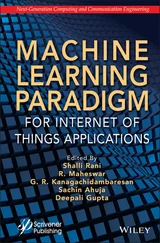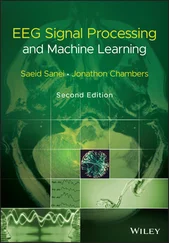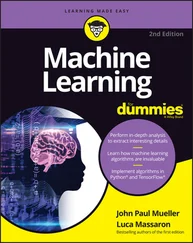2 If the input xi and wining wi have a different class label, then move them apart together by ΔWi(j) = −B(j)(Xij −Wij).
3 Voronoi vectors/weights wj corresponding to other input regions are left unchanged with Δwi (t) = 0.”
“The parameters used to train the LVQ model has a learning rate of 0.01 to 0.05 with 0.001 of learning rate reduction and the maximum epoch of 10,000.” The learning rate of 0.05 resulted in the highest accuracy. An accuracy of 72% was achieved without extraction, 87% with extraction using a subset of pair symmetric channel called asymmetric wave and 84% accuracy without asymmetric wave. Using LVQ resulted in computation time being under a minute without any loss of accuracy. Generalization of data in LVQ training was relatively faster and more stable than Multilayer Perceptron. 10 seconds of signal data was identified in 0.44 s in each test.
Here 6 different emotional states such as sorrow, fear, happiness, frustration, satisfaction and enjoyment can be classified using different methods by extracting features from EEG signals. Decent accuracy was achieved by extracting appropriate features for emotional states such as discrete wavelet transforms and ANN recognizer system. In Ref. [4] this model, valence emotions range from negative to positive whereas arousal emotions go from calm to excitement. Discrete Wavelength transforms were applied on brain signal to classify different feature sets. The models used here is the 2-dimensional Arousal-Valence model. We invoked stimulus in the participant’s neural signals using IAPS datasets. The IAPS Dataset contains 956 images with each of them projecting all emotional states. The participants of IAPS rated every picture for valence and arousal. 18 electrodes of a 21-electrode headset are used with 10–20 standard system and a sampling rate of 128 Hz. Since every subject’s emotion are different, a self-assessment manikin (SAM) using the 2-dimensional space (arousal/valence) model where each of them having 5 levels of intensity was taken by the subjects needed to rate his or her emotion. The test was attended by 5 participants between the ages of 25 and 32. Each participant was given a stimulus of 5 s since the duration of each emotion is about 0.5 to 4 s.
To do this the data is derived from 4 frequency bands—alpha, beta, theta, delta. ECG (heart) artefacts which are about 1.2 Hz, “EOG” artefacts (Blinking) is below 4 Hz and EMG (Muscle) artefacts about 30 Hz and Non-Physiological artefacts power lines which is above 50 Hz which removed in preprocessing. In DWT all frequency bands are used and for each trial, the feature vector is 18 ∗ 3 ∗ 9 ∗ 4 = 1,944 (18 electrodes, 3 statistical features, 9 temporal windows & 4 frequency bands). In our instance, an “artificial neural network” has been used as a form of classifier of “backpropagation” algorithm for learning models implemented on the network. The architecture consists of 6 outputs and 10 hidden layers for all the different states of emotion. The accuracies “10-fold cross-validation technique” was used to avoid overfitting while estimating accuracies for the classifiers. As user’s emotion can be affected by many factors such as their emotional state during the experiment, the best achieved accuracy for the network was 55.58%.
They applied Support Vector Machine to explore the bond between neural signals elated in prefrontal cortex based on taste in music. They [5] explored the effects of music on mental illnesses like dementia. It was observed that music enabled listeners to regulate negative behaviors and thoughts occurring in the mind. A BCI-based music system is able to analyze the real time activities of neurons and possible to provide physiological information to the therapist for understanding their emotions. The methods used to evaluate the data depended on the subjects.
The BCI music system consisted of EEG capturing system, a Bluetooth module for transmitting data from the EEG signals to analyze real time issue and also accordingly control the music. 3 major categories of music were considered to trigger positive emotions in the brain, namely the subject’s favorite songs, K448 and high focus audio. The high focus audio comprised of non-vocal instrumentals produced by “The Brain Sync Company”. It consisted of classic white noise elements such as those found in nature like falling rain or a cricket’s cry, etc. The company claimed that these audio clippings helps a person reach their peak performance brain state with relative ease and without getting distracted. 28 participants attended the experiment having a mean age of 21.75 years.
‘Fast fourier transform with 0.5 overlap to average power with a frequency band.’
Each power was normalized by the valve of the baseline in same frequency band across the scalp. (N = 3)
NEEGS, F = EEGS, F1/N * S = 1NBEEGS, F
To investigate the asymmetric response of alpha power of PFC, a relation ratio (RR) = RP − LPRP + LP * 100, RP = alpha power from right hemisphere of PFC (FP2) & LP is from (FP1).
SVM was used utilizing a “non-linear kernel function” to recognize the responses of EEG signals. In one-sample test setting the median to 128 with a range between 0 and 255, it was seen that values went from highest to lowest in favorite songs, “K448” and High Focus, in that order. This proved that SVM recognized emotions with high accuracy. This approach did vary vastly from other approaches such as using musical properties such as tempo and melody as a metric to judge emotional response.
It is used to pretreat EEG signals for recognizing emotions. Emotions and their states are divided broadly as being either optimistic or pessimistic. This study [6] is able to scientifically explain emotion driven events such as rash driving and creativity. “DEAP” datasets were used to divide the EEG signals into sub-band analysis using “Fisher’s Linear Discriminant” and then used “Naive Bayes Classifier” to classify emotions as being optimistic or pessimistic. 40 different locations of the brain were tracked for recording the EEG signals.
The result of X, are the size of filters. Defining hk as the kth convolution of any depth, then sampled feature is: hk = f (Wk * X + bk), where,
W = weight of filter, b = bias of filter, * = convolution,
f (.) = non linear activation function.
When CNN is trained, cross–entropy function is usually used as the cost function.
Cost = 1n x[y Ln y + (1 − y)Ln (1 − y)], where, n = no. of training samples, x = input samples, y = actual output, y = target output. It defines the smaller the cost function, the closer the classification results is to target output. The convolution layer input samples are {X, Y} = {{X1, Y1}, {X2, Y2},….,{Xi, Yi}}, i = {1, 2,….,n}.
X = feature of ith sample, Y = label of ith sample. X = {A * B * C}, a = channel of EEG signals. b = Down sampled EEG signals, f = sampling frequency. C = duration of EEG signals, t = time of video. C is the depth of 2 dimensional feature vector.
Labels are:Yi = {0, 0 < labels i < 4.5, 1, 4.5 < labels i < 9}Yi = {0, 0 < labels i < 3, 1, 3 < labels i < 6, 2, 6 < labels i < 9}
In 2 category recognition algorithm, 0 = optimism & 1 = pessimism. In 3 category recognition algorithm 0 = optimism, 1 = calm & 2 = pessimistic.tan (hk) = ehk − e − hkehk + e − hk
The full connection layers use following as an activation function: Softplus(y) = Log (1 + ey)
When trained, a stochastic gradient descent is used as an optimization algorithm to update the weights:

y() = output of CNN, J() is loss value which is mean of multiple cost function values. The program is written in python and implemented using keras library toolkit and theano.
Читать дальше













